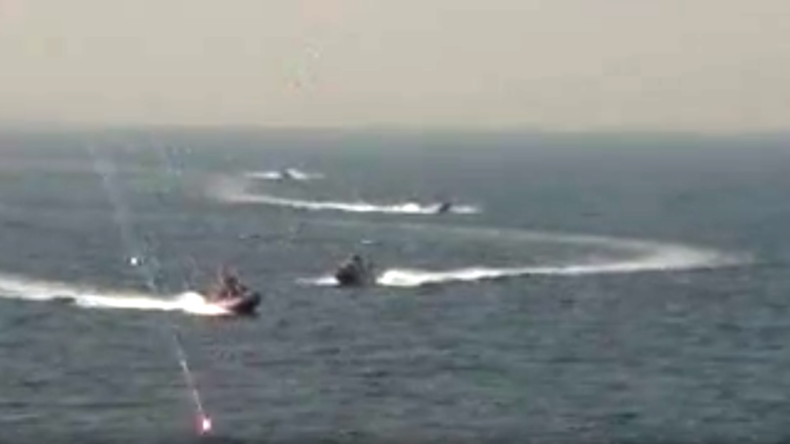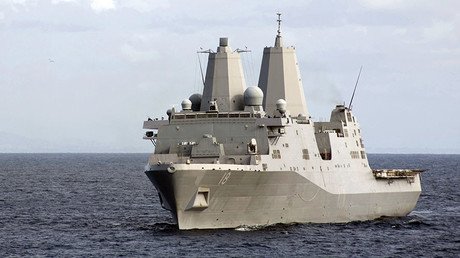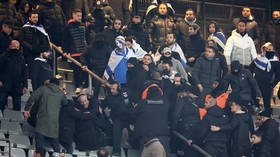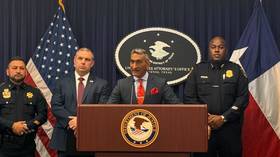US warship ‘harassed’ by Iranian speedboats near Strait of Hormuz

The USS Nitze, a guided missile destroyer, was intercepted by four Iranian military boats near the Strait of Hormuz on Tuesday, US defense officials said. The Iranians ignored attempts to communicate and acted in an “unprofessional” manner the US said.
The Nitze and guided missile destroyer USS Mason encountered the Iranians in international waters, where four Iranian Revolutionary Guard Corps boats approached the warships at high speed, Stars and Stripes reported.
The Nitze hailed the boats by radio 12 times with no response, the statement said. After two of the Iranian boats came closer, the US crew used its ship whistle and flares in an attempt to communicate with the Iranians, but those attempts were also ignored. The destroyer ultimately changed course to steer clear of the Iranian vessels.
The Iranians allegedly came as close as 300 yards (274 meters) of the Nitze during the encounter.
“These sorts of unsafe and unprofessional actions can lead to escalation and miscalculation, which may necessitate additional defensive measures,” said Commander Bill Urban, public affairs officer for US Naval Forces Central Command (NAVCENT). “Commanding officers have an inherent obligation for self-defense.”
Urban said some 10 percent of all US encounters with the Iranians in 2015 and 2016 have been similarly unsafe.
“The Iranian high rate of closure on a Unites States ship operating in accordance with international law while transiting in international waters along with the disregard of multiple warning attempts created a dangerous, harassing situation that could have led to further escalation including additional defensive measures by Nitze,” the NAVCENT statement said.
“We absolutely expect all maritime nations to act in a professional manner in accordance with international law,” Urban said. “The US Navy continues to remain vigilant, and is trained to respond in a professional manner for all interactions.”
Commenting on the incident, Iranian Defense Minister Hosein Dehghan said the nation’s forces patrol the area to protect its territorial waters.
“If any foreign vessel enters our waters, we warn them, and if it’s an invasion, we confront,” he told the semi-official Tasnim news agency
The Strait of Hormuz is a key maritime route, through which about one-fifth of the world’s oil supply flows. It’s also one of the places where the presence of the US Navy stirs tensions with regional stakeholders. Similar complaints about allegedly unprofessional behavior regularly come from the Pentagon over Chinese forces in the South China Sea and the Russia navy in the Black and Baltic Seas.
WATCH MORE:













